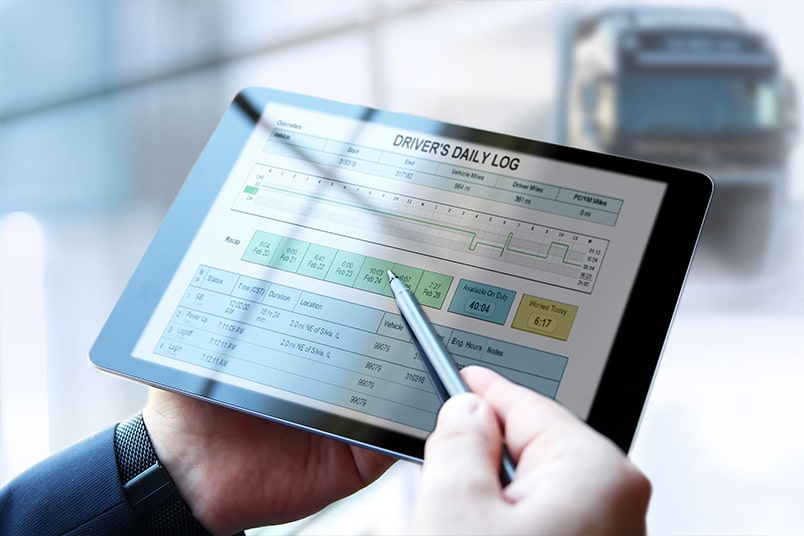Key Takeaways
- Telematics is a Game-Changer in Profitability: Telematics, over the past 45 years, has revolutionized the transportation industry, leading to significant profit maximization and operational efficiencies.
- Operational Efficiency and Savings: With telematics, businesses can enhance operational efficiency, potentially saving up to 25% on fuel costs and ensuring every mile driven counts.
- Enhanced Safety, Compliance, and Maintenance: Telematics offers real-time insights into driving patterns, ensuring safety, aiding in compliance with automated logs, and providing proactive maintenance alerts to prevent unexpected breakdowns.
- Investment with High Returns: While setting up a telematics system requires an initial outlay, the long-term efficiencies, cost savings, and safety benefits can quickly outweigh the investment, making it a must-have tool in the trucking toolkit.
There’s little doubt that the trucking and transportation industry has undergone numerous transformations throughout its long history. But among these, telematics stands out as a game-changer.
“Telematics” is a term that was first coined in a 1978 technology development report, and over the past 45 years has proven to be a game changer in the way folks in the transportation industry maximize profits in their business.
Join me as we discover how this amazing technology can improve your productivity and lead to extraordinary business achievements.
What is Telematics for a Commercial Fleet?
A telematics system, at its essence, is the marriage of telecommunications and informatics. It’s all about gathering data from your vehicles, whether it’s their location, speed, or fuel consumption, and then using this data smartly to make savvy business choices.
While many modern-day trucks include a telematics system built in, like Ford’s Pro™* line, there are also third-party systems available, such as Samsara*.

How Does Fleet Telematics Work?
Imagine your entire fleet of trucks fitted with smart devices, almost like a smartphone for each vehicle. These devices pick up various signals from different parts of the truck, like the engine, brakes, or fuel system. They also use GPS to know the truck’s location.
Now, this data, such as how fast the truck is going, how much fuel it’s using, or if there’s a problem with the engine, is sent in real-time to a central system. It’s like the truck constantly texting updates about its status and location.
Back at the company’s office, managers and other staff can see this information on their computers or even their smartphones. They can check if a truck is on the right route, if a driver is taking too many unscheduled breaks, or if a truck needs maintenance soon.
In simple terms, telematics in trucking is like giving each vehicle its own voice to communicate its status, needs, and location, ensuring everything runs smoothly and efficiently.
Telematics vs. Tracking: Clearing the Air
In the dynamic world of trucking, understanding the tools at our disposal is vital. So, let’s demystify two key terms: “telematics” and “tracking.”
Telematics: Picture telematics as the brain and nervous system of your fleet. It’s more than just collecting data; it’s the heart of communication, processing, and storing all vital information. It’s like having a doctor who not only checks your pulse but understands your entire health history. Whether it’s about the condition of a truck or how a driver accelerates and brakes, telematics has the full scoop.
Tracking: Now, tracking is like a watchful guardian. It primarily uses GPS technology to answer one main question: “Where is my vehicle right now?” It gives instant location updates, making it invaluable for real-time decisions. But remember, while it tells you the “where,” telematics provides the “how” and “why.”
In essence, tracking gives you the snapshot, and telematics offers the complete overview.

The Powerhouse Benefits of a Telematics System
In the ever-advancing trucking world, telematics is like the secret sauce for a successful fleet. Here’s why it’s making waves:
Operational Efficiency: Imagine shaving off minutes from each trip by avoiding traffic snarls. Now, multiply those minutes over a year. That’s the kind of efficiency we’re talking about. Telematics ensures every mile counts.
Maintenance Alerts: No more unexpected breakdowns. With telematics, you get a heads-up on potential issues, ensuring your deliveries are always on time.
Safety and Compliance: Your team is your biggest asset. Telematics helps you keep an eye on driving patterns, ensuring everyone’s safety. Plus, with automated logs, you’re always on the right side of the law.
Cost Savings: Fuel is a big-ticket expense. But with telematics, you can optimize routes and driving habits, leading to significant savings. In fact, recent studies suggest potential fuel savings of up to 25% with telematics!
In short, telematics isn’t just a fancy gadget; it’s the future of smart, efficient, and safe trucking. Every transport business should have it in its toolkit.

The Flip Side: Telematics Challenges
In the realm of trucking, a telematics system is often hailed as a game-changer. But like all technologies, it comes with its set of challenges. Here’s a rundown:
Big Brother Vibes: Telematics can feel a bit like having someone constantly looking over your shoulder. Employees might be wary, thinking, “Is Big Brother watching my every move?” But it’s not about surveillance; it’s about safety and efficiency. Open dialogue can bridge the gap, turning that feeling of being monitored into a sense of collective responsibility.
Drowning in Data: Imagine having a bookshelf full of books but not knowing which one to read first. Telematics can flood you with numbers, graphs, and charts. It’s easy to get lost. The key? Don’t try to read everything. Train your team to spot the chapters (or data points) that truly matter, and focus there.
The Price of Progress: Getting a telematics system up and running isn’t pocket change. There’s equipment to buy, systems to install, and staff to train. But remember, good investments yield returns. The efficiencies and savings telematics brings can quickly overshadow the initial costs.
The Occasional Gremlin: Tech is wonderful until it isn’t. Glitches, downtimes, and errors are part and parcel of any system. But, they’re not the end of the world. With a solid maintenance routine and a telematics partner worth their salt, these hiccups can be reduced to minor inconveniences.
In summary, while telematics has its challenges, with the right approach and mindset, they’re not insurmountable. It’s about turning those potential pitfalls into stepping stones toward a more efficient future.
How Much Does Fleet Telematics Cost?
Alright, let’s talk dollars and cents when it comes to telematics in the trucking world, and what you should expect.
The Initial Outlay – Hardware: Picture the hardware as the brain of your telematics system. Depending on the sophistication and features, you could be looking at anywhere from $100 to $700 per vehicle. Most basic trackers are on the lower end, while advanced systems with cameras, sensors, and real-time analytics hover around the higher range.
The Ongoing Costs – Monthly Service: This is your system’s heartbeat, keeping everything running smoothly. Typically, you’re looking at a monthly service fee of $15 to $50 per vehicle. This includes access to the software, data storage, and often customer support.
The Annual Breakdown: So, let’s do some quick math. For a mid-range hardware ($250) and an average monthly service fee ($35), you’re initially investing $250 for just the hardware. Add to that the service costs, and it’s $420 per year (that’s $35 x 12 months).
So, for the first year, per vehicle, you’re looking at an approximate total of $670. From the second year onwards, with hardware costs out of the picture, it drops to around $420 annually.
In a nutshell, telematics is an investment, but when you weigh it against the potential savings in fuel, maintenance, and efficiency, it can very quickly pay for itself. Plus, remember, with technology becoming more ubiquitous, prices tend to become more competitive over time. So, always keep an eye out for the best deals!

In Conclusion: Embracing the Telematics Wave
Having been working with owners in the transportation and trucking industry since 1986, we’ve seen our fair share of tech trends. But telematics? It’s here to stay.
The challenges facing the transportation and trucking industry are real, but with the right approach, the rewards are immense. From boosting operations and slashing costs to enhancing safety, its benefits are crystal clear.
It’s not just about keeping up with the times; it’s about staying ahead. And telematics is your ticket to the future.
* The references to Ford’s Pro™ line and Samsara are purely examples. We have not conducted a comprehensive evaluation of these vendors, and such mentions should not be construed as endorsements of their products.

